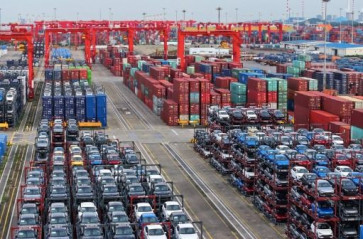Popular Reads
Top Results
Can't find what you're looking for?
View all search resultsPopular Reads
Top Results
Can't find what you're looking for?
View all search resultsIndonesia's next juncture: Facing China's decline
For decades, China has been the world’s fastest-growing major economy, driving global growth and providing a significant boost to fellow emerging countries like Indonesia. However, recent forecasts paint a starkly different picture.
Change text size
Gift Premium Articles
to Anyone
A
s China’s economic engine begins to sputter, Indonesia finds itself at a critical juncture. The intricate economic relationship between these two nations, characterized by substantial trade and investment flows, now presents both challenges and opportunities.
With the global economic landscape shifting, it is imperative for Indonesia to reassess its strategies and navigate these uncertain waters with caution.
For decades, China has been the world’s fastest-growing major economy, driving global growth and providing a significant boost to fellow emerging countries like Indonesia. However, recent forecasts paint a starkly different picture.
The International Monetary Fund (IMF) projects that China’s GDP growth will dwindle to just 3.3 percent by 2029, a sharp decline from the double-digit growth rates that once characterized its economic rise. This deceleration is not a temporary blip but a reflection of numerous deep-seated issues, an ongoing property crisis, a staggering debt burden, increasing government control and a rapidly aging population.
These developments will inevitably affect Indonesia, which has China as its largest trading partner and is a major recipient of Chinese foreign direct investment (FDI). In 2023 alone, China accounted for over 25 percent of Indonesia’s exports and contributed to more than 14 percent of its total FDI inflows. An analysis of GDP growth from 1961 to 2023 reveals a significant alignment between the economic performances of Indonesia and China, particularly after 1998, when both countries embarked on transformative economic reforms.
A recent study by IFG Progress on the Indonesia-China economic interrelationship suggests that a one-percentage-point increase in China’s GDP growth has historically led to a 0.247 percentage-point increase in Indonesia’s growth rate, a clear indication of how closely these economies are linked.
Over the past decade, Indonesia actually has made strides in its trade relationship with China, but challenges remain. Indonesia's exports to China over the past 10 years (2014-2023) grew by 15.61 percent compound annual growth rate (CAGR), nearly twice the growth rate of Indonesia's imports from China, which stands at 8.32 percent CAGR.



















